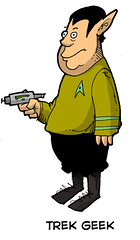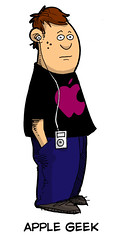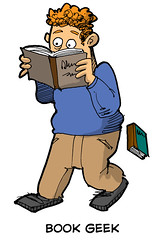Khan Noonien Singh, long one of the most famous and most loved villains in the Star Trek universe, has over time presented some (extraordinarily geeky) issues to fans who know his story.
Namely, the Eugenics Wars of the 1990’s. According to Star Trek canon as established in the original series episode ‘Space Seed‘…
From 1992 to 1996, Khan was absolute ruler of more than one-quarter of Earth’s population, including regions of Asia the Middle East.
In the mid 1990s, [Khan and other genetically engineered] Augment tyrants began warring amongst themselves. Other nations joined to force them from power in a series of struggles that became known as the Eugenics Wars. Eventually, most of the tyrants were defeated and their territory re-captured, but up to 90 “supermen” were never accounted for.
Khan escaped the wars and their consequences along with 84 followers who swore to live and die at his command. He saw his best option in a risky, self-imposed exile. In 1996, he took control of a DY-100-class interplanetary sleeper ship he christened SS Botany Bay, named for the site of the Australian penal colony. Set on a course outbound from the solar system, but with no apparent destination in mind, Khan and his people remained in suspended animation for Botany Bay’s (nearly) 300-year sublight journey.
Of course, when this was all dreamed up in the 1960’s, no-one knew that Trek would survive until the mid-’90’s, let alone grow into the phenomenon that it did. Once the ’90’s rolled around, though…well, yes, as fans, we are perfectly aware that Trek is fiction. It’s just more fun when we can find ways to make the Trek universe and our universe overlap. When Trek takes place tens or hundreds of years in the future, that’s easy. Once we get to a point where we’ve moved solidly into the decades referenced in Trek with no sign of genetically engineered supermen or Eugenics Wars…well, that’s when things start to get creative.
A couple of years ago, I picked up two Trek novels by Greg Cox: The Eugenics Wars: The Rise and Fall of Khan Noonien Singh, Volume I and Volume II. Cox does an incredible job of retconning (that is, ‘retroactive continuity‘: “…the adding of new information to ‘historical’ material, or deliberately changing previously established facts in a work of serial fiction. The change itself is referred to as a ‘retcon’, and the act of writing and publishing a retcon is called ‘retconning’.”) as he merges the established Trek universe with the known recent history of the real world.
In Cox’s version of history, many of the perceived minor skirmishes and events around the world during the ’90’s, from middle-eastern conflicts to terrorist incidents were actually the public result of conflicts between the supermen as they battled with each other behind the scenes. It’s done quite well, and nicely filled in the details of Khan’s life on Earth up to his exile on the Botany Bay.
Hundreds of years later, of course, the Enterprise discovers the Botany Bay drifting in space and has their first encounter with Khan, culminating with Khan and his crew being marooned on Ceti Alpha V. Then, eighteen years later, Khan is rediscovered and eventually killed during the events of Star Trek II: The Wrath of Khan.
While long recognized as one of the best (if not the single best) Trek film, Khan left a number of unanswered questions regarding Trek continuity:
- Why did the Reliant not recognize that Ceti Alpha VI had exploded and that they were actually orbiting Ceti Alpha V?
- Why did nobody realize they were in the same system that Khan had been marooned in?
- Why had Khan never been checked up on, as Kirk had promised to do at the end of ‘Space Seed’?
- How could Khan recognize Chekov (and vice versa) when Koenig wasn’t on the show until the season after ‘Space Seed’ was filmed?
- What happened during Khan’s years on Ceti Alpha V?
Yesterday while on lunch and browsing the bookstore shelves, I noticed that Cox had a new Khan book out, To Reign in Hell: The Exile of Khan Noonien Singh, in which he explores the eighteen years between ‘Space Seed’ and The Wrath of Khan. I’ve only read the first chapter so far, but Cox is continuing to display his ability to construct believable retcons. The majority of the book is concerned with the last of the above posed questions, telling the story of Khan’s years in exile. The first chapter, though, in addition to setting up the framing story of Kirk, Spock, McCoy and Sulu returning to Ceti Alpha V to investigate and assuage Kirk’s guilt over the deaths of his crewmen, family, and ship during the events of the second, third, and fourth Trek films, also quickly and concisely answers the first three questions.
Cox even comes up with an explanation for the fourth — though he did fail to use Koenig’s “Chekov kept Khan waiting in the restroom” idea.
Khan’s long been Trek’s best villain, and Greg Cox is doing a bang-up job of filling in the holes outside of established canon. It’s well worth picking up his books if you’re in the mood for a little Trek-based fun.
(Incidentally, consider ‘retkahn’ or ‘retkahnning’ to be my proposal for Greg Cox’s ability to flesh out Khan’s story. The word amuses me, and neither seems to show up in Google yet [retkhan, retkhanning], which actually surprised me a bit.)







